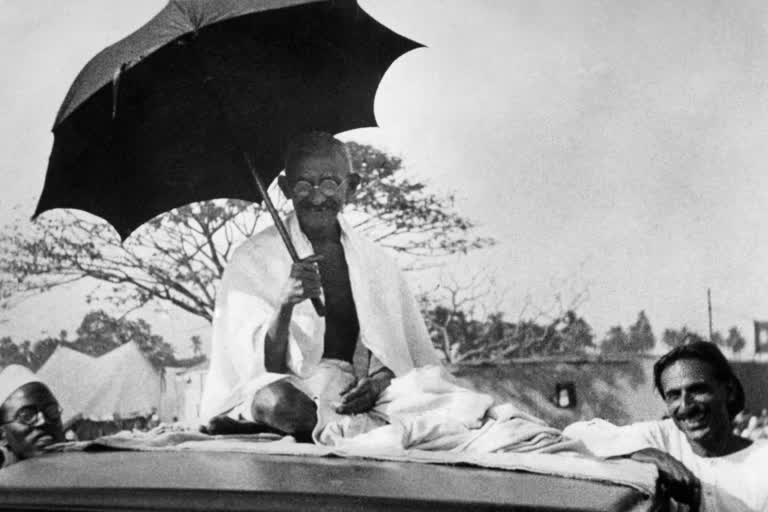Hyderabad: Broadly speaking, Mahatma Gandhi’s contribution to the whole mankind has been the theory and practice of Satyagraha and constructive programmes as the means to attain freedom, justice and a peaceful society in which man lives in complete harmony with other living beings and nature.
Satyagraha was a unique technique developed by Gandhiji to fight injustice. He had developed this technique over 50 years of his experiment with truth. While he was leading the Satyagraha movement to liberate the country from the British rule, he also conceived and suggested a clutch of constructive programmes to build the nation.
For those who wanted to participate in the satyagraha movement and lived with him in his ashrams at Sabarmati in Ahmedabad and at Sewagram near Wardha, Gandhiji stipulated a strict regimen based on eleven vows which his disciple Vinoba Bhave later called as 'Ekadash Vrata' and which became known in many of the ashrams set up in the country inspired by Gandhiji.
Before settling down in India, Gandhiji had spent over 20 years in South Africa. Initially, he had gone to South Africa for a year with the intention of earning some money. He started taking interest in the problems of migrant Indians and became so deeply involved that he gave up his lucrative legal practice to lead a non-violent struggle which he later described as Satyagraha. For Gandhiji, Satyagraha was not just a means of non-violent struggle but became philosophy his life.
Gandhiji firmly believed that those who did Satyagraha should not tolerate any kind of injustice; must willingly accept whatever sufferings come their way; there cannot be any place for cowardice in Satyagraha; fight should be against injustice and not against an individual doing injustice; it cannot be an act of revenge or for punishing the opponent; there are good and bad people in every society and an entire society cannot be evil; and voluntarily inviting suffering while protesting injustice can become an effective way to move the heart of the opponent.
Gandhiji did satyagraha on several occasions in his life. He suitably modified the forms of satyagraha in accordance with time and situation. He constantly thought about it and explained to the people about it through his speeches and writings. He claimed that he had become a specialist in Satyagraha but also said his were not the last words on the subject. He believed that the various new aspects of Satyagraha would unfold and develop as the world realized the power of truth, love and pure soul.
According to Gandhiji, the best form of Satyagraha is one which achieves success only by making the opponent understand the justification of a truthful cause. Therefore, he stressed on the need to spread awareness among the adversaries as well as the common people about injustice. Satyagraha must non-cooperate with all types of unjust system and willingly accept whatever suffering or punishment that entails.
The country witnessed different Satyagraha movements under Gandhiji’s leadership. During the non-cooperation movement between 1919 and 1922 and the civil disobedience movement of 1930-34, the country witnessed unprecedented awareness and activism among the people who willingly suffered all kinds of ordeal. In the first movement, a large number of people from the educated middle class went to jail. In the second movement thousands of women came out from the comforts of their homes to oppose the British rule. People realized that Satyagraha was an effective way of protest against injustice.
